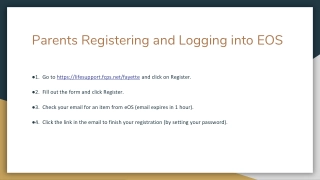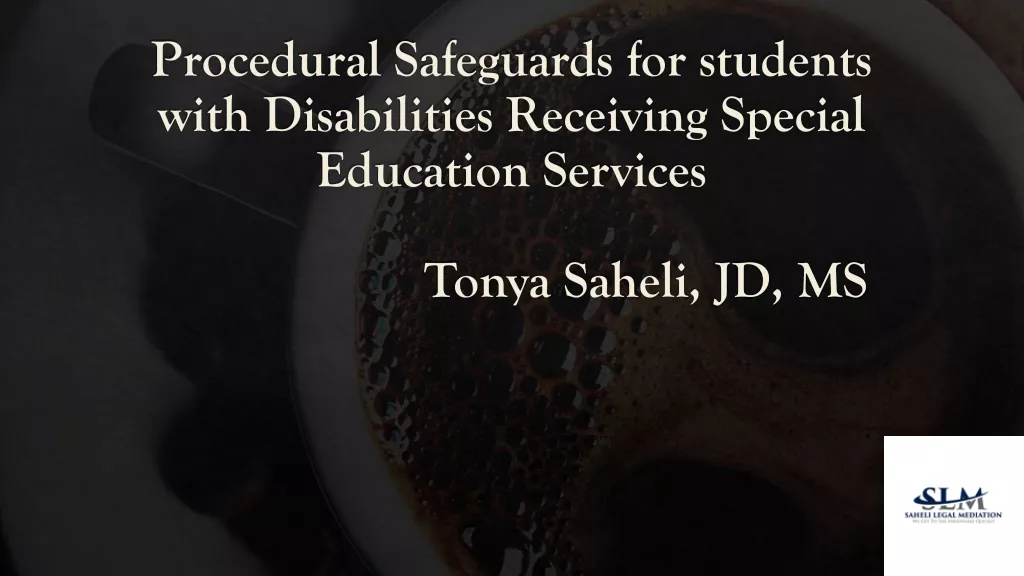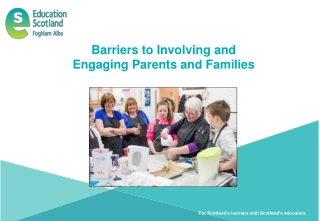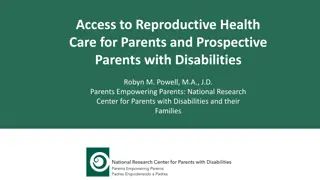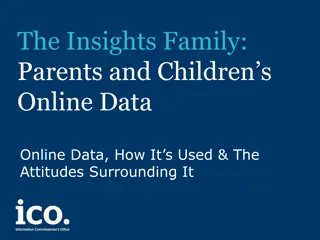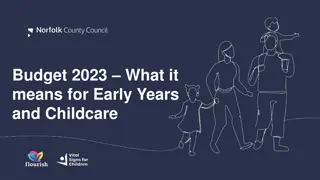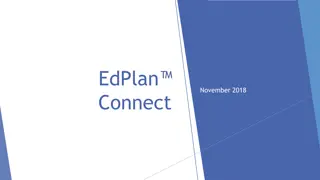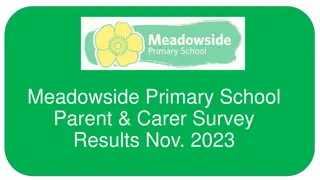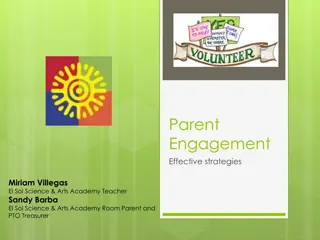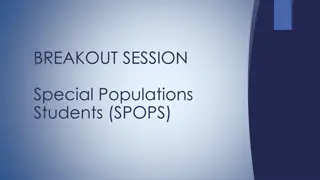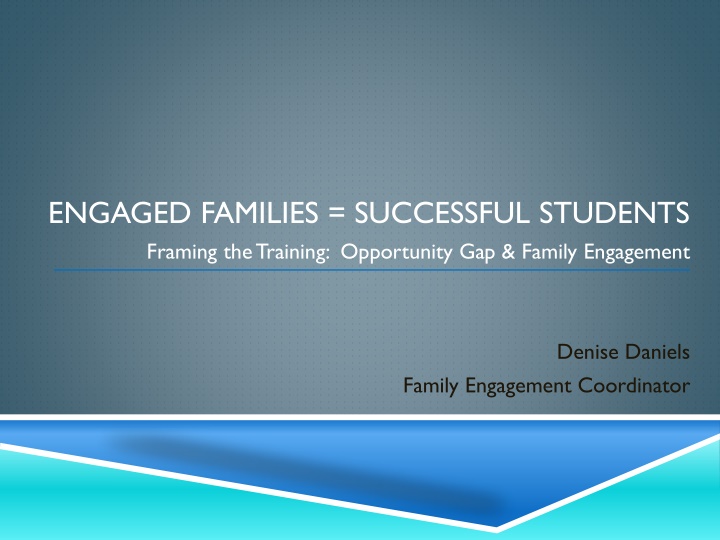
Closing the Opportunity Gap through Family Engagement in Education
Learn how engaged families contribute to student success and academic achievement, bridging the opportunity gap in education. Discover key components and strategies for effective school improvement and understand the importance of parental involvement in enhancing student outcomes. Addressing academic gaps and promoting shared responsibility between families, schools, and communities can lead to a brighter future for all students.
Download Presentation

Please find below an Image/Link to download the presentation.
The content on the website is provided AS IS for your information and personal use only. It may not be sold, licensed, or shared on other websites without obtaining consent from the author. If you encounter any issues during the download, it is possible that the publisher has removed the file from their server.
You are allowed to download the files provided on this website for personal or commercial use, subject to the condition that they are used lawfully. All files are the property of their respective owners.
The content on the website is provided AS IS for your information and personal use only. It may not be sold, licensed, or shared on other websites without obtaining consent from the author.
E N D
Presentation Transcript
ENGAGED FAMILIES = SUCCESSFUL STUDENTS Framing the Training: Opportunity Gap & Family Engagement Denise Daniels Family Engagement Coordinator
PREPARING STUDENTS FOR THE FUTURE Education is a SHARED responsibility. We will need a comprehensive set of ways to help kids succeed.
A LANDMARK STUDY Bryk et al. (2010): A 15 year longitudinal study found that there are FIVE KEY components (supports) needed for effective school improvement 1. 2. 3. School leadership Parent-Community ties Student-centered learning climate Coherent instructional system Professional capacity 4. 5.
AN ESSENTIAL INGREDIENT FOR SUCCESS Strong links between engagement of families in the education of their children and school success lead to: increased school readiness higher reading and math scores higher graduation rates It is also a way to address academic gaps that exist in education Xitao, Fan and Michael Chen. Parental Involvement and Students Academic Achievement: A Meta-Analysis. Educational Psychology Review 13.1 (2001): 1 22. Print.
ACADEMIC GAPS The achievement gap has been used to describe the gap that exists nationwide (and statewide) between the academic outcomes of students from different socioeconomic, ethnic, and/or cultural groups.
THE ACHIEVEMENT GAP In the state of Washington we choose to talk about the Opportunity Gap, instead of the achievement gap. All students can achieve, but opportunity speaks to the lack of access many of the students at the bottom of the gap have to resources that lead to academic success. This is more indicative that this is a systemic issue and does not solely rest on the student.
WE ARE ALL IN THIS TOGETHER Opportunity gaps can be closed when changes occur in homes, classrooms, buildings, communities, districts, and in the Legislature. In order to truly improve academic performance and experience for students in Washington State schools, changes must be made at ALL levels with ALL stakeholders.
WHEN ITS WORKING Families Ideally, when families, schools, and communities all work together, students are more likely to achieve. Student Achievement Schools Communities
INVOLVEMENT? ENGAGEMENT? EMPOWERMENT? Involvement Engagement One way Passive Imbalance of power between families and educators Active Everyone is in this together Education is a SHARED responsibility
FOUNDATIONS: SIX DIMENSIONS OF FAMILY ENGAGEMENT PARENTING: Good home environments to support children as students LEARNING AT HOME: Help at home with learning opportunities DECISION MAKING: Be involved in school decisions COMMUNITY COLLABORATION: Make connections with the community VOLUNTEERING: Participate in school activities COMMUNICATION: Have good home- school communication Source: Epstein, J. L., Salinas, K. C., Sanders, M. G., & Simon, B.S. (1997). Schools, family, and community partnerships: Your handbook for action. Thousand Oaks, CA: Corwin Press.
PARENTING SUPPORT Teaching families how to relate to their growing students Providing information about mental and physical development Teaching families about social issues and pressures Organizing support groups Parenting Classes Offer parents continuing education (GED, computer classes, ELL)
COMMUNICATING Students are not always the best carriers of information Provide Opportunities for Two-Way Communication Class Parents Parent Only Events Telephone Trees Web Updates Text Messaging Email Family Access Targeted Family Events (Testing Information, College and Career Events, Health and Development)
VOLUNTEERING Job Sharing/Shadowing Organizing Targeted Activities Family College Visits Career Explorations Homeroom Parents Welcome Events for Incoming Mid-Year Families Sports Events Event Planning
LEARNING AT HOME Share Standards Skills Information Use Interactive Homework Strategies Home learning packets for parents Goal Setting Activities TIPS (Teachers Involve Parents in Schoolwork) (John Hopkins University)
DECISION MAKING Promote Family Involvement in School Improvement Committees Encourage Input on Budget Issues (Building and District) Provide Families with Information about Programs of Study Provide Families with Information about College and Career Preparation
COLLABORATING WITH THE COMMUNITY Share Community Resources with Families Encourage Parent Education Opportunities at Local Businesses and Organizations Library Work Source Colleges
BARRIERS TO AUTHENTIC ENGAGEMENT Some families make the intentional choice not to engage with schools because they feel: They do not have much to contribute (efficacy) They feel uncomfortable and unwelcome (as opposed to uninvited) at school They do not understand the role they can play in their children s education (role definition) Hoover-Dempsey, K. V., Walker, J. M. T., Sandler, H. M., Wehtsel, D., Green, C. L., Wilkins, A. S., & Clossom, K. (2005). Why do parents become involved? Research findings and implications. The Elementary School Journal, 106(2), 105-131. ,
OVERCOMING BARRIERS Positive First Interaction-Good Relationship Provide video/audio information via websites Ensure Material is Available in Languages Parents Understand Provide Information in as many ways as possible Create a Welcoming Environment Encourage Open Communication Provide Interpreters When Necessary
THE IMPACT OF FAMILY ENGAGEMENT They would be contributing one billion hours of valuable family involvement capacity, which is critical to increasing student achievement for the nation s 55 million K-12 students. If teachers replicated that type of time one-on-one with their students, the minimum dollar cost to do would be $40 billion per year the same amount spent by the federal government on all K-12 public schools in 2011-12. Source: Federal Education Budget Project, New America Foundation , PayScale.com - based on the median teacher pay in America of $40,000/yr

